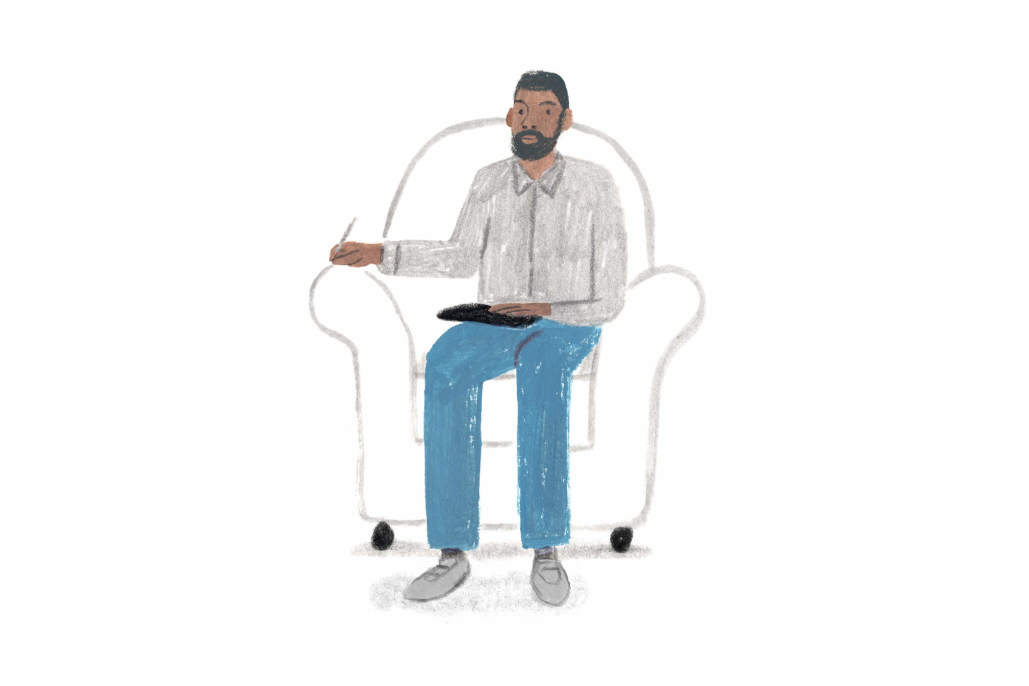Everyone loves an easy fix, and this is especially true at the doctor’s office. We take comfort in knowing that after four to six weeks on crutches, we’ll walk again. We rest easier when we’re told that after a ten-day course of antibiotics, we’ll be bacteria-free.
So while nobody likes getting sick, if all we need to do is heed the doctor’s orders or read the label on a pill bottle, it’s not a huge deal. We know we’ll get better, and soon. Knowing how and when we’ll get back to full health is a gift we take for granted far too often.
We’ve grown so accustomed to walking out of doctor’s offices with prognoses and prescriptions that longer-term approaches to wellness make us skeptical. Compare the typical treatment plan for a rash to the typical treatment plan for depression, and talk therapy sounds unscientific. There’s no topical ointment, no guarantee you’ll be “healed” if you stick to the regimen.
Simply put, mental illness—and mental wellness—is more abstract than a rash or a fractured wrist. It requires a more nuanced approach. Patients who are used to easy remedies for simpler medical issues may struggle to come to terms with an open-ended treatment plan. Many wonder how long it takes for therapy to work. Some newcomers fear they’ll end up in therapy forever.
The longer you work, the better you’ll be
Research does suggest that the length of length of treatment is related to more positive outcomes. As with physical exercise and practicing the piano, the more you do it, the better your results are likely to be. But if your concern is that 35 years from now you’ll be sitting on the same old sofa crying about something that felt traumatic when you were five, you shouldn’t worry too much.
A set of guidelines for treating post-traumatic stress disorder (PTSD) published by the American Psychological Association provides some valuable perspective. Their studies show that 50% of patients reported alleviation of symptoms after an average of 15 to 20 weekly sessions.
Therapists designed specific courses of treatment as short as 12 weeks that were “scientifically shown to result in clinically significant improvements.” Other therapists recommended twenty to thirty weekly sessions. No matter how you look at it, just four to seven months of treatment for PTSD was enough to make a big impact in the lives of those patients.
And as for more common disorders like anxiety, the Anxiety and Depression Association of America maintains that with some therapies, benefits can be seen within 16 weeks.
Of course, this timeline isn’t applicable to everyone. Each client is unique, and has unique issues that warrant an unique treatment plan. The duration of treatment is re-evaluated throughout its course; it is subject to change.
Therapists think in terms of months, not years. They measure progress over weekly sessions, not decades. Plans are created to accomplish agreed-upon goals and the efficacy of the treatment is assessed over time.
On top of that, nobody is better equipped to dispel the popular misconception that therapy has to be a lifetime commitment.
These clinicians can’t always offer the easy fixes and tidy timelines that doctors in other fields have at their disposal, but they’re trained to help you solve your problems and they want those problems solved well. It’s highly unlikely you’ll end up in therapy forever, if only because your therapist doesn’t want you to be.
If you think you should see a therapist but you’re concerned you’ll become a forever patient, your best bet is to find a mental health professional and seek a consultation. Because the process is client-dependent, nobody can provide more insight into the duration of your treatment than the doctor or clinician who ends up treating you.
On top of that, nobody is better equipped to dispel the popular misconception that therapy has to be a lifetime commitment.
In the meantime, it might help to consider some various factors that determine how your doctor or clinician approaches a treatment plan.

Your diagnosis
There are dozens of mental illnesses that manifest themselves in hundreds of ways. These conditions range in severity and frequency. Some struggle with mental illness occasionally and others have chronic, long-lasting conditions. Severity and frequency play a large role in determining how often one should see a therapist and for how long.
If you suffer from chronic depression, your therapist will probably recommend more intensive treatment over longer periods of time. If you experience mild anxiety that you can link to one or two triggers, your treatment could be pretty straightforward. For many, getting a diagnosis is the first step towards understanding what therapy will look like in the long term.
Of course, some folks never get specific diagnoses. In fact, a lot of people in therapy don’t have any disorder or illness at all, and that’s totally OK. Just because there’s no diagnosis to be made, doesn’t mean you’re any less “deserving” of therapy.
Your mental health professional
But, of course, some people go to therapy for reasons beyond mental illness (think couples counseling) and aren’t exactly “diagnosable.” This is one reason finding the right therapist is important. Differing approaches inevitably lead to different treatment plans.
Receiving treatment from someone who understands your needs and priorities often leads to good therapy. Good therapy often leads to good outcomes.
Unlike a course of antibiotics, therapy requires a decent amount of active participation.
The goal is not to find someone to rush you through the process, but to find someone who works well with you. Confidence and mutual understanding influence all aspects of your experience, including the efficacy and length of your treatment. It’s well worth your time to find the right doctor or counselor.
Your commitment
Unlike a course of antibiotics, therapy requires a decent amount of active participation. Being honest and communicative with your therapist enables them to do the best job possible, which, in turn, enables you.
Remaining open to suggestions, challenges and new ideas is key to making progress and moving along. If your therapist gives you “homework” be sure to do it and do it well. You’ll only increase your chances of accomplishing your goals meaningfully and in a timely fashion by putting in the effort.
American Psychological Association (APA). (2017). How long will It take for treatment to work? Retrieved from https://www.apa.org/ptsd-guideline/patients-and-families/length-treatment
Anxiety and Depression Association of America (ADAA). (2021). How effective are treatments? How long do they take? Retrieved from https://adaa.org/living-with-anxiety/ask-and-learn/faqs/how-effective-are-treatments-how-long-do-they-take
U.S. National Library of Medicine. (2013). Mental disorders. Medlineplus.gov. Retrieved from https://medlineplus.gov/mentaldisorders.html#cat_78






